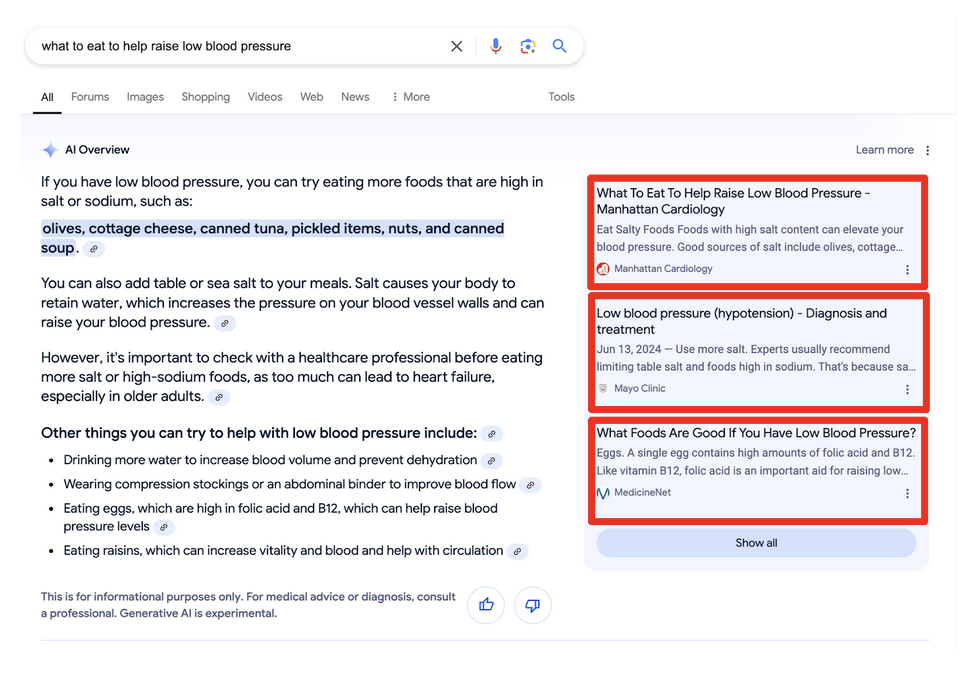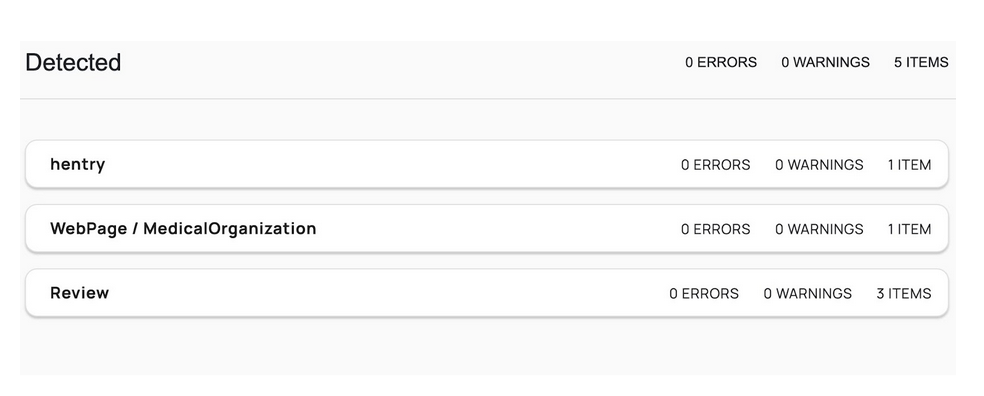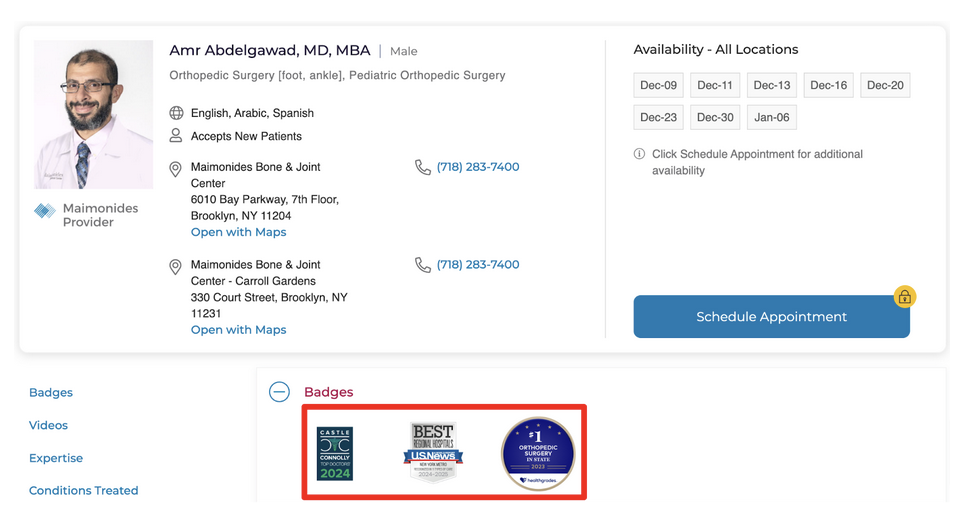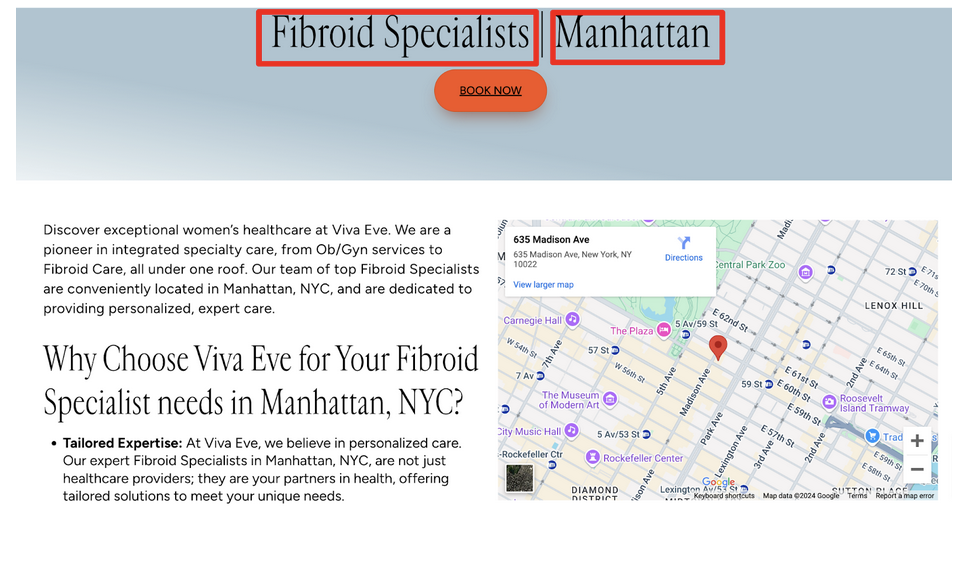Importance of Schema Markup for Healthcare SEO
This article will be dedicated to why schema is important from all the details around gathering and organizing schema types. But an equally important piece that is discussed less is, how schema should be connected to your website at large. Schema markup is a coding language that is directed towards search engines so they can easily read and digest information. It is not explicitly tied to the front end (users experience) of your website. Schema could be a mirrored placement of information to what a user sees on the front end. Or it can affect how information is presented to a user on a search result. But there is a large gap between what is marked on the back end and what, if anything, it does to that part of the site on the front end.
That disconnect is the important area of focus for us. We built our HealthAuthorityCMS and rooted our healthcare website development experience to not only ingest and tag schema markup but dynamically connect, where appropriate, to the front end experience as well. Traditionally a website is designed, developed on the front end then tagged/coded on the back end. The back end is for many things but that is where the schema markup lies. Our view of this process is that it is inefficient. Your business and its information is dynamic. We want to have a flexible connection between the schema markup and its corresponding front end experience.
Schema.org markup is essential for defining the structure of medical organizations and their departments, providers and more, helping search engines understand the relationships between entities. The relationship between entities is another key distinction. Relationships are dynamic, so schema markup should be as well. Often schema markup is seen as a project that is statically applied once.
Did we tag our business hours? Did we add some reviews and mark them up?
But we see schema as a continual process. What are the relationships/connections between your specialties and providers? What actions are continuing to reinforce your authority on a particular condition or treatment? And so much more.
Common Schema Types for Healthcare Providers
If you haven’t spent some time on Schema.org we would encourage you to click in and out of the healthcare directory. It is a structured source of information that can be used in many ways. Navigating through this directory is a treasure trove of information. We see it as a dynamic spreadsheet of information that if relevant to your business should be collected and associated (which we built our HealthAuthorityCMS to do).
There are so many prompts out of this that help us identify underutilized business data, content/structural gaps and more. This is one of the biggest for us.
Departments Vs Specialties
We use departments as the clinical categorization and specialties as the consumer categorization. Obstetrics and gynecology is a department. Women’s Sexual Health is a specialty. By bringing the business/board certifications and consumer search to the table together you create a healthy discussion on how to represent and address both. It’s clearly not just about the actual markup language but how you use its guidance in other areas.
The markup types we are focusing on area:
- MedicalOrganization – Home page
- MedicalClinic
- Image
- Logo
- Name
- Description
- Telephone
- URL
- Address (streetAddress, addressLocality, addressRegion, postalCode, addressCounty)
- Opening Hours Specification
- Potential Action (ReserveAction)
- Aggregate Rating
- Article
- mainEntityPage
- Headline
- thumbnailURL
- Image
- datePublished
- dateModified
- Author
- Published
- Description
- Hospital – Hospital pages
- IndividualPhysician – Physician pages
- LocalBusiness (Physician)
- MedicalCondition
- Name
- alternateName
- associatedAnatomy (AnatomicalStructure / AnatomicalSystem / SuperficialAnatomy, name)
- Cause (MedicalCause, name)
- riskFactor (MedicalRiskFactor, name)
- signOrSymptom (MedicalSympton, name)
- MedicalProcedure or MedicalTest– Medical Services pages
- DiagnosticProcedure / PalliativeProcedure / PhysicalExam / SurgicalExam / TherapeuticProcedure
- name
- alternateName
- bodyLocation
- Followup
- howPerformed
- Indication
- Preparation
- DiagnosticProcedure / PalliativeProcedure / PhysicalExam / SurgicalExam / TherapeuticProcedure
- MedicalSpecialty
- MedicalScholarlyArticle
- healthPlanNetworkID
Why is Schema Markup Important for Healthcare Providers?
Schema markup is important for healthcare providers and brands of any size. But the complexity and need increases the bigger the organization and the more you are pursuing ‘Authority’. You may be a single doctor primarily doing annual exams. Basic schema markup around your physical location will be valuable. You could also be a single doctor, researching and treating the long term side effects of lyme disease. Where the basic schema is still necessary but your day to day has more activity positioning you as an authority. Markup around the research, presentations, affiliations, publication, etc will be more valuable to you compared to the previous example.
Another way to think about it is the network node of communications visual. The more “entities” you have the exponentially increasing chance you are miscommunicating the relationship between all of them. If the search engines aren’t able to clearly digest the information of your business in a structured way then they will not be able to present it correctly to a user.

As your medical or healthcare organization increases in size there are more and more reasons to lead with a schema oriented mentality. The Importance of Schema.org for multi-brand and multi-location healthcare organizations can be seen in:
- Enhanced Search Visibility and Rich Snippets
- Improved Local SEO for Healthcare Organisations
- Increased Trust/Authority with Medical Schema Types
- Voice Search Optimization – Better Understanding and Support
- Support for Knowledge Graph Entities
- Clear relationship between specific schema.org types (MedicalOrganization, MedicalClinic, Person, MedicalSpecialty, MedicalProcedures, MedicalCondition)
- AI source attribution – as AI search and overviews increase in use the more structured information you have the better chance of you being cited and attributed as a source feeding the algorithm’s response.

How to Implement and Test Schema Markup
Two great and free tools around testing schema markup are:
https://validator.schema.org/ – This is our preferred schema markup language. It is also the only external tool recommended by Google. Plug in any URL and it will populate any schema it detects and whether there are errors in how it was marked up.

- https://search.google.com/test/rich-results – This tool from Google will test any URL as well but look for additional markup that could be presented as a ‘rich result.’
Benefits of HealthAuthority CMS for Healthcare Organizations
As an agency that positions itself as specialists in healthcare the HealthAuthority CMS is the backbone of that specialization. We have built and continue to lead the development of the only open source healthcare specific CMS. Built on top of the open source WordPress platform Tidal Health Group focuses on continually releasing features and functionality that define authority. We believe in an open source nature because we don’t lock our clients into a proprietary platform. The benefits of our experience and development evolve, below are a few foundations points of value:
- Data Control / “Source of Truth” – whether we become the initial step towards a centralized data control or tap into existing systems (provider data management, scheduling systems, etc) you will benefit from centralizing your website data control efforts. Our staging to live and live to staging connection allows for your data control to be dynamic as well. Commons events that will cause the need for a dynamic and scalable control system are:
- Physician recruitment and/or turnover
- New location growth or acquisitions
- Service line expansion
- Brand growth or acquisition
- Brand Investment/Control
- Measurable Results
- Relationship Markup/Connection to Front End Experience – this may be the largest area of growth and difference for us. The more connected your data and front end experience is the more unique web experiences you are able to offer like:
- Most related/local location presented – when a user is on a condition, provider, speciality or service page you can present the closest related location that that “entity” is available
- Implement awards or recognition at scale – as providers, departments or areas of the organization are recognized you can gather, relate and populate the information visually on the front end
- Programmatic SEO pages – as organic or paid queries are discovered you can easily populate related entity pages like:
- Location + speciality
- Insurance + speciality
- And many more



Schema Markup for Healthcare Websites: Best Practices
- Add booking/scheduling system URL to schema
- Ensure the booking/scheduling system URL is included in the schema markup for relevant pages to enhance user experience and search visibility.
- Use the same URL across different schema types to maintain consistency and clarity for search engines.
- Consider adding the booking URL to both doctor profiles and location pages to facilitate easy appointment scheduling for users.
- Update hours format in schema to split into specific dates
- We recommend splitting opening hours into specific dates for clarity and precision.
- Structured data for hours can enhance search result snippets, providing users with accurate information.
- Using specific dates allows for different hours on different days, accommodating varied schedules.
- Advanced schema structure for location pages with tabs
- When updating schema structure for location pages with tabs, consider the following:
- Ensure each tab has a unique schema markup that reflects the specific services or departments associated with that location.
- Maintain a consistent medical organization schema markup in the header for the entire brand while updating the medical clinic schema for each tab.
- Use canonical tags judiciously to avoid content duplication, especially if each tab contains distinct information relevant to the services offered.
Location Page Schema and Hours
- How to handle multiple locations for doctors
- Each doctor should have a dedicated page that includes their specialties, contact information, and associated locations.
- Utilize schema markup to define the relationship between doctors, their specialties, and the medical organization to enhance search engine visibility.
- Consider creating individual tabs for each specialty at a location, ensuring that each tab has unique content and can be indexed separately by search engines.
- Discussed format for entering hours of operation
- Hours of operation can be entered as free text, allowing flexibility in formatting.
- It is recommended to specify hours for each day separately if they differ, using structured data for clarity.
- If hours are consistent, a single text field with a clear format (e.g., “Monday 9 AM – 5 PM”) can be used.
- Decided to manage hours both on website and Google listing
- Managing hours on both the website and Google listing ensures consistency in information presented to users.
- It allows for real-time updates across platforms, minimizing confusion for patients seeking appointment times.
- Having accurate hours on both platforms helps improve local SEO and enhances visibility in search results.
Schema Details for Homepage and Doctor Profiles
- Use default contact information for doctors
- Use the default contact information for doctors to maintain consistency across the website. This is centered around Name, Address and Phone Number.
- Ex: Robert J. Smith, MD is a completely different entity then Dr. Robert Smith
- This approach simplifies the user experience by providing a single point of contact for each doctor.
- Default contact information can be updated centrally, ensuring accuracy and reducing administrative overhead.
- Use the default contact information for doctors to maintain consistency across the website. This is centered around Name, Address and Phone Number.
- Agreed to include both image and logo in schema
- Including both image and logo in schema can enhance visibility in search results.
- Images and logos can be used by Google for rich snippets, improving click-through rates.
- Providing visual elements helps establish brand identity and recognition in search results.
- Schema details for doctor profiles, including works for attribute and medical specialty
- Outline the schema details for doctor profiles, including the “works for” attribute and medical specialty:
- Define the “works for” attribute to establish the relationship between the doctor and the medical organization, linking to the parent organization schema.
- Include the “medical specialty” property to specify the doctor’s area of expertise, allowing for multiple specialties to be listed as separate values or comma-separated.
- Ensure that the doctor’s credentials (e.g., MD) are incorporated as part of the name field, while the job title can be used to list their specialties.
Schema Structure and Organization
- Decided to use medical organization type for main brand and sub-brands
- The medical organization type serves as the primary schema markup for the main brand and its sub-brands, ensuring consistency in structured data across the website.
- This approach allows for clear hierarchical relationships, linking sub-organizations to the main medical organization, which enhances search engine understanding and indexing.
- Utilizing the medical organization type facilitates the inclusion of relevant details such as specialties, locations, and services, improving visibility in search results and user experience.
- Schema.org markup for medical organizations and departments
- Medical organizations should be marked up as “MedicalOrganization,” with sub-organizations and departments defined using appropriate schema types to clarify their roles and services.
- Each department or specialty can be represented as a “Department” or “MedicalSpecialty,” allowing for detailed descriptions of services, procedures, and associated medical professionals.
Future of Schema Markup
While the future of a particular markup language or type could easily be debated. We’ve seen types like review markup be abused by the SEO community. Where a visual difference in search results comes and goes based on a choice outside of our control. If you look at schema as a finite end result that you can check off or “win” at the future looks bleak. But if you look at schema markup as an attempt to create clean structured data that is as dynamic as your business the future is bright.
Tidal Health Group prides itself on being a partner to healthcare organizations that are looking to lead the conversation on being an authority in every sense of the word. Some areas of interest that we are already researching or just excited about are:
- Full automation of the process of schema.org creation (procedures, conditions, departments, etc.)
- Build connections to verifiable public medical AI models to generate the relevant, related and verified content for medical pages
- Increase the speed and efficiency of schema generation. Close the gaps of information and time between your physical and digital authority.
- Schema.org structure we use vs Future use cases (Medical schema.org markup combined with Knowledge graph logic)
- Extract specific information from a block of text (e.g. contact details)
- Parse unstructured data (from the long form text) into a table/structured form with predefined structure (real use case for our needs – auto-generate the schema.org data from the page content on a site)
Learn more about our HealthAuthorityCMS and healthcare website development experience. Partner with the leading healthcare SEO agency that is pushing the boundaries of building authority as much as you are.
